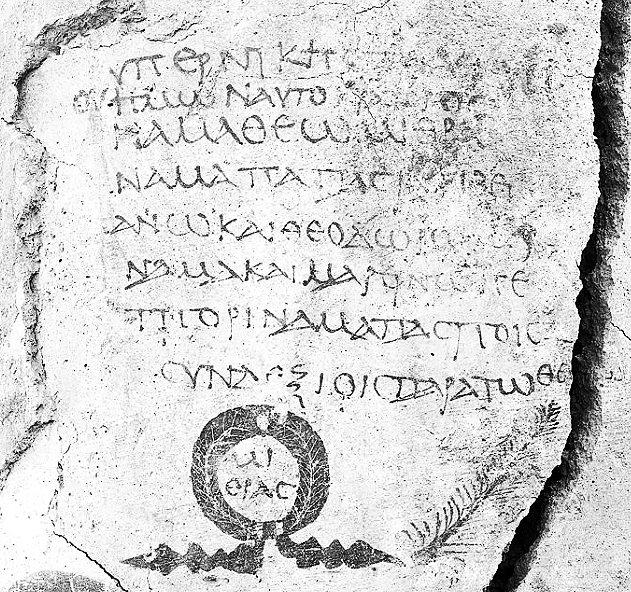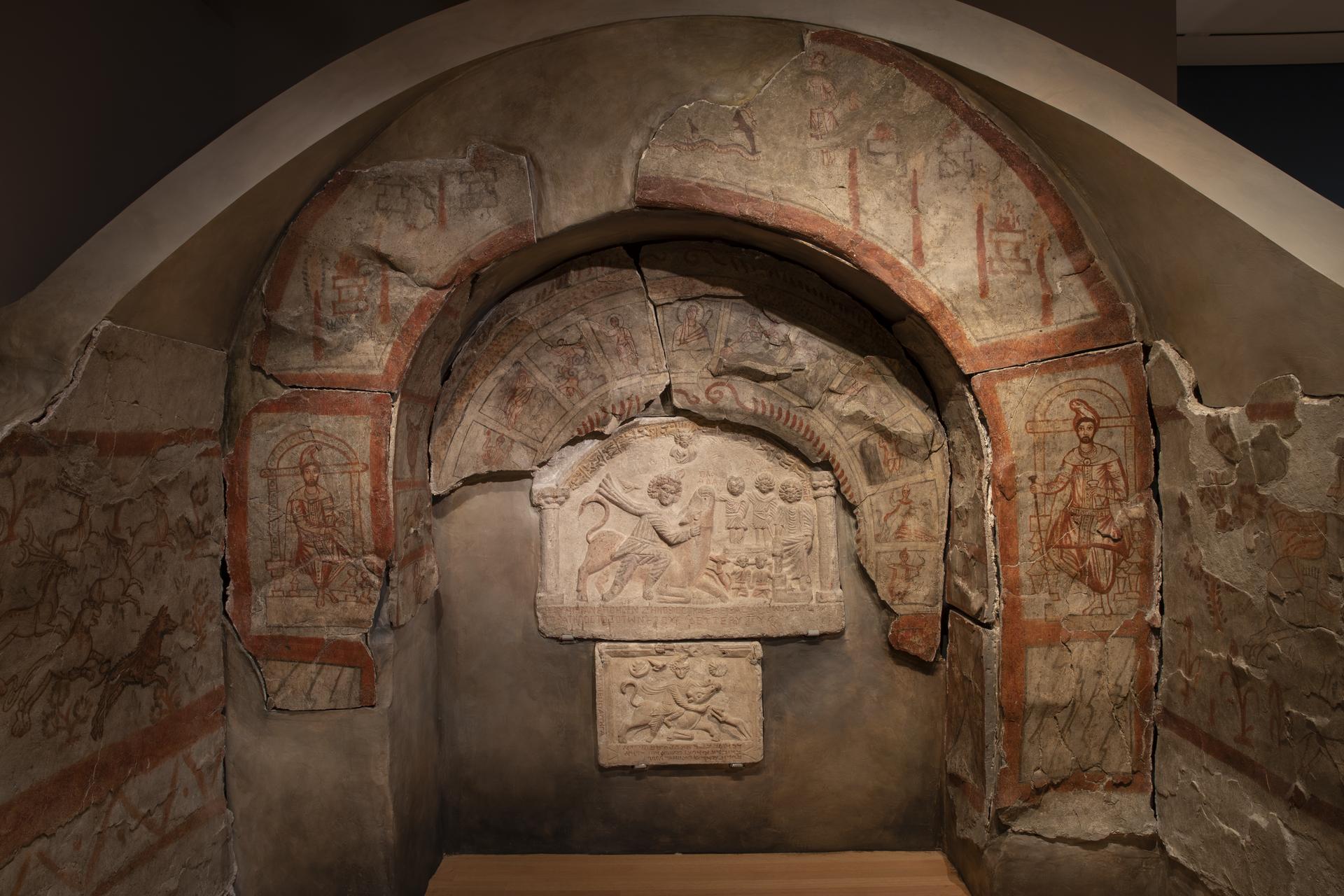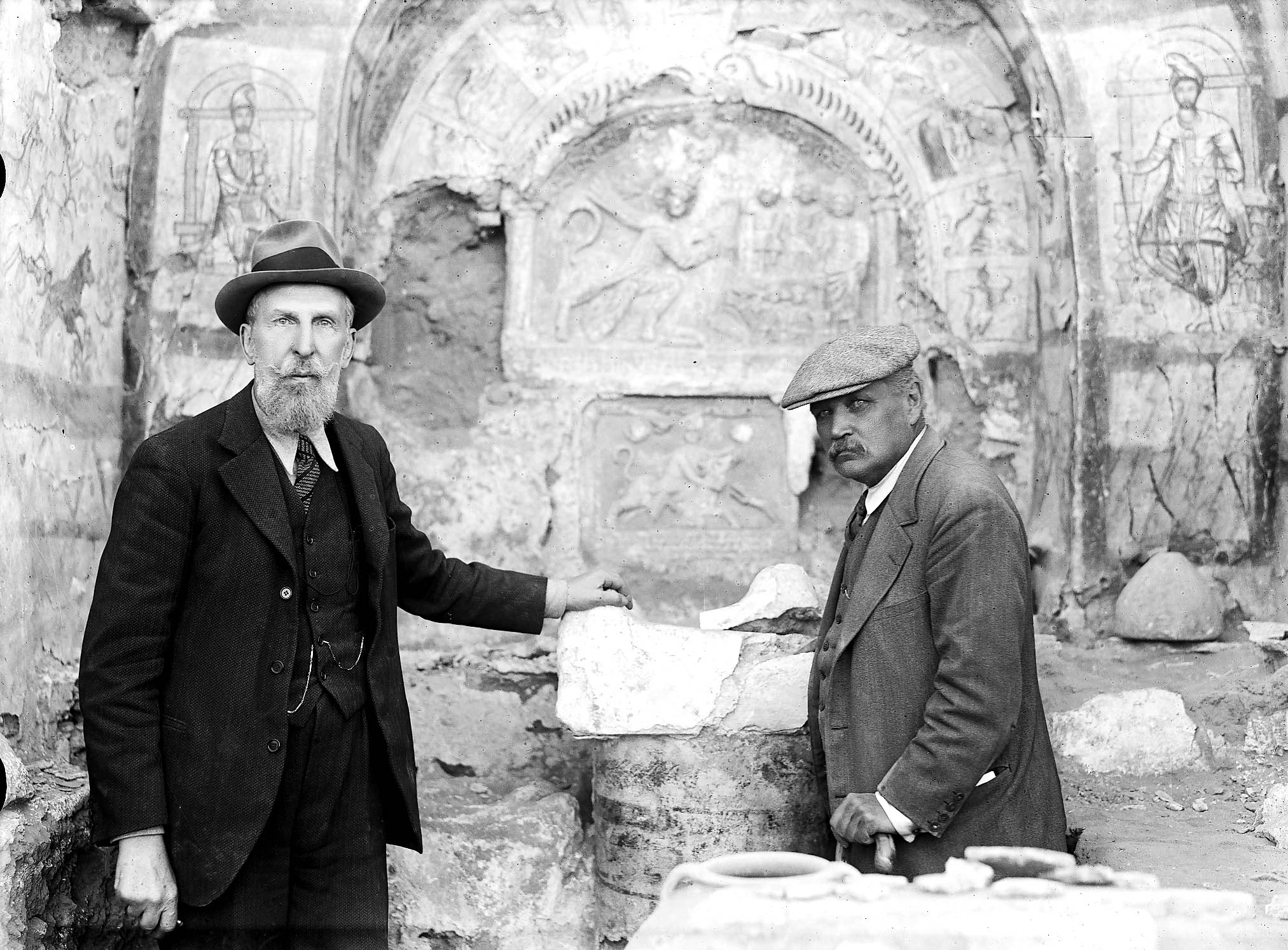
Mareinos
Μαρεως
He is the painter of most of the frescoes in the mithraeum of Dura Europos.
Biography
of Mareinos
- Mareinos was a Leo of the Mithraeum of Dura Europos.
- Active c. 212 – 217 in Dura Europos, Syria-Coele (Syria).
TNMP 76
Mareinos or Mareos is known for his frescoes in the Mithraeum of Dura Europos. His paintings are dated to the first half of the 3rd century AD. Most of his work is relatively well preserved. One of them includes the word Nama followed by his name. Nama is a word of Persian origin used as a form of blessing in the Mithras cult, so Mareos was most likely a follower of Mithraism.
Furthermore, we know of a certain Mareneios who, if it is indeed the same man, was μελλόλέων, meaning 'about to become a lion', then λέων or 'new lion'. A homonym –or is it always the same?– mentioned after two Fathers (TNMM 468) is presented as τετίτω or candidate, before being described as ἀντίπατρος, that is, antipater, a title whose exact meaning remains to be defined.
References
- Shrine to the God Mithras (Mithraeum)
- Bricault; Roy (2021) Les cultes de Mithra dans l'Empire Romain
Mentions
Column with inscription from Dura Europos
TNMM 468
The inscription pays homage to the emperor, probably Caracalla, to Mithras, the fathers, the petitor and the syndexioi.
Fresco with tauroctony and seven cypresses
TNMM 422
This enigmatic fresco on top of the main tauroctony shows Mithras killing the bull, accompanied by Cautes and Cautopates, surrounded by burning altars and cypress trees.
Mithraeum of Dura Europos
TNMM 34
The most emblematic of the Syrian Mithraea was discovered in 1933 by a team led by the Russian historian Mikhaïl Rostovtzeff.




Comments
Add a comment